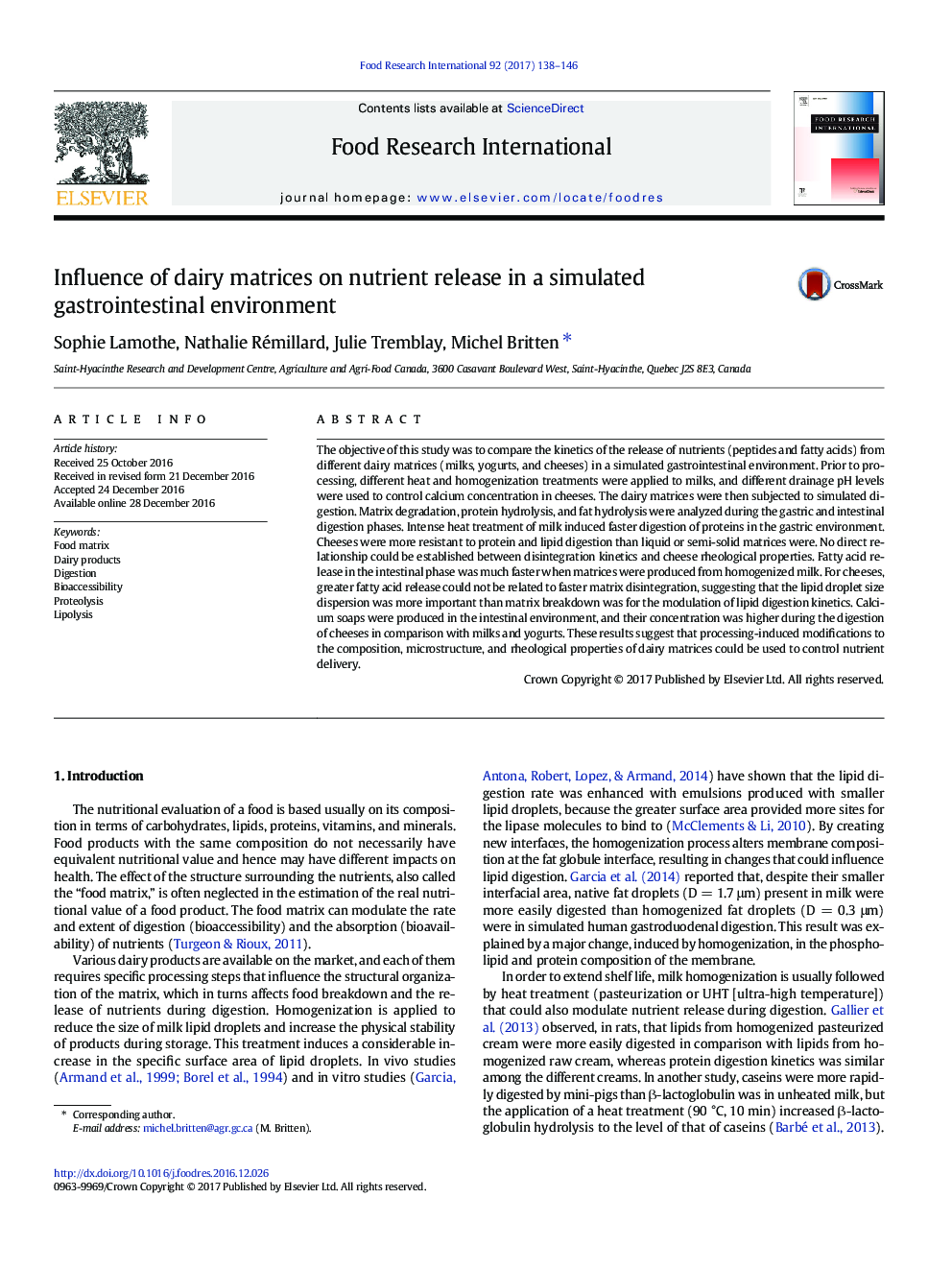| Article ID | Journal | Published Year | Pages | File Type |
|---|---|---|---|---|
| 5768316 | Food Research International | 2017 | 9 Pages |
â¢Cheese is more resistant to protein and lipid digestion than yogurt or milk.â¢Milk heat treatment increases protein digestion rate in the gastric environment.â¢Milk homogenization increases lipid digestion rate in the intestinal environment.â¢Cheese promotes the formation of calcium soaps in the intestinal environment.
The objective of this study was to compare the kinetics of the release of nutrients (peptides and fatty acids) from different dairy matrices (milks, yogurts, and cheeses) in a simulated gastrointestinal environment. Prior to processing, different heat and homogenization treatments were applied to milks, and different drainage pH levels were used to control calcium concentration in cheeses. The dairy matrices were then subjected to simulated digestion. Matrix degradation, protein hydrolysis, and fat hydrolysis were analyzed during the gastric and intestinal digestion phases. Intense heat treatment of milk induced faster digestion of proteins in the gastric environment. Cheeses were more resistant to protein and lipid digestion than liquid or semi-solid matrices were. No direct relationship could be established between disintegration kinetics and cheese rheological properties. Fatty acid release in the intestinal phase was much faster when matrices were produced from homogenized milk. For cheeses, greater fatty acid release could not be related to faster matrix disintegration, suggesting that the lipid droplet size dispersion was more important than matrix breakdown was for the modulation of lipid digestion kinetics. Calcium soaps were produced in the intestinal environment, and their concentration was higher during the digestion of cheeses in comparison with milks and yogurts. These results suggest that processing-induced modifications to the composition, microstructure, and rheological properties of dairy matrices could be used to control nutrient delivery.
Graphical abstractCalcium soap formation during digestion of dairy products.Download high-res image (78KB)Download full-size image
